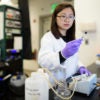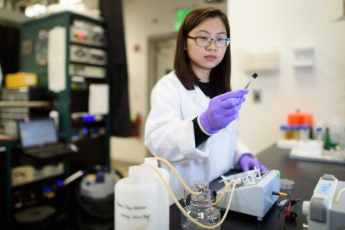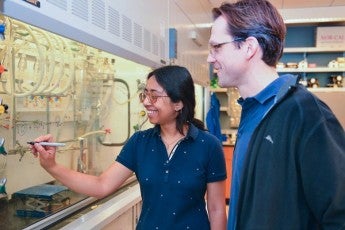In the United States, most electricity from the grid comes from power plants that run on coal or natural gas. These plants generate 35 percent of all carbon dioxide emissions in the United States.

A Stanford study finds that methane emissions from natural gas leaks could be greatly reduced by targeting “super emitters.” (Image credit: Shutterstock)
Climate scientists say we need to reduce global emissions by about 4 percent a year, going to zero emissions, or even negative emissions, before the end of the century. But emissions-free technologies like wind, solar and nuclear may not be able to address the problem quickly enough.
In developing economies, the demand for cheap and reliable electricity from fossil fuels continues to grow, generating even more greenhouse gases that contribute to climate change. But from an environmental standpoint, not all fossil fuels are created equal.
Natural gas
Natural gas is primarily methane. When burnt, methane emits about half as much CO2 as a coal. In the last 10 years, the United States has seen a boom in the production of low-cost natural gas, which many electrical utilities are adopting as a cleaner alternative to coal.
But one drawback of natural gas is the leakage of uncombusted methane, a far more potent greenhouse gas than CO2. Stanford faculty members Rob Jackson and Adam Brandt in the School of Earth, Energy and Environmental Sciences have been identifying the wells and pipes where those leaks are most likely to occur so that industry can prevent them. They’ve found that a small number of wells produce most of the leaked methane.
To better understand the benefits and risks of increasing natural gas production, the Precourt Institute and the School of Earth created the Natural Gas Initiative (NGI), a campus-wide research program launched in 2015.
One key area of NGI research focuses on unconventional gas reservoirs and how they can be better managed to increase the gas-recovery rate, now well below 20 percent, said NGI Director Mark Zoback. By increasing recovery, gas production can be maintained with fewer land-use impacts, he added.
Carbon capture and sequestration
Beyond switching from coal to natural gas, another approach for reducing emissions from fossil fuels is to capture the carbon dioxide and store it underground in deep geological formations, a technique known as carbon capture and sequestration.
With support from the Global Climate and Energy Project (GCEP), Lynn Orr, Sally Benson and other Stanford faculty members helped establish the scientific basis for safe and effective sequestration, including monitoring techniques demonstrating that captured CO2 is permanently trapped underground. Hamdi Tchelepi, a professor of energy resources engineering, uses supercomputers to study how injected CO2 gas interacts with rock and fluids underground. In addition to permanently sequestering CO2, Stanford faculty explore using the gas for sustainable purposes, like making renewable plastic.
















